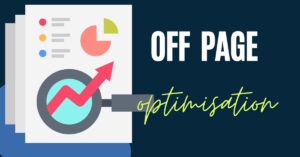Technical SEO is a type of SEO that helps to technically optimize a website for search engines.
The main steps for technical SEO are as follows –
- Website Structure And Navigation – Make sure that the website has a logical and well-organized structure that allows search engines to crawl and understand the content of the website easily. Use clear navigation menus, breadcrumbs, and internal linking to get a hierarchical structure.
- XML Sitemap – Create and submit an XML sitemap to search engines, This file lists all the pages o a website, helping search engines discover and index them more efficiently.
- Robots Text – Optimize the robot’s text file to control which parts of website search engines can access and crawl.
- Website Speed – Page load speed is an extremely important factor. Optimize website’s speed by compressing images, CSS, and javascript files.
- Mobile-Friendly Design – Make sure the website is responsive and mobile-friendly as mobile usability is now a significant ranking factor. Use responsive design techniques to ensure a website.
- URL Structure – Create SEO-friendly URLs that are descriptive and readable, Use hyphens to separate words and avoid using unnecessary parameters or numbers in URLs.
- Canonicalization – Implement canonical tags to address duplicate content issues and consolidate link equity for multiple versions of the same page (ex – www vs non-www or HTTP vs HTTPS).
- HTTPS and SSL – Secure the website by implementing HTTPS encryption with an SSL certificate. This not only protects user data but also improves the website’s trustworthiness and search engine ranking.
- Structured Data Markup – Implement structured data on the website to help search engines understand the content better and display rich snippets in SEPs such as star ratings, reviews, and event information.
- HTML Tags Optimization – Optimize HTML elements like title tags, meta description, heading tags L(h1. h2,h3, etc), and alt attributes for images. Use relevant keywords naturally and provide accurate summaries to improve click-through rates from search results.
- Crawlability And Indexability –Make sure search engine bots can crawl and index websites effectively check for crawl errors, and broken links, and fix any issues that hinder the crawling and indexing process.
- Website Security – Protect the website from security threats and hacking attempts. Regularly update software, plugins, and themes to their latest versions Use strong passwords and implement security measures like firewalls and malware scanners.
- Mobile Page Optimization – Optimize the website for mobile devices by implementing Accelerated Mobile Pages(AMP) or mobile-specific optimizations like lazy loading images, responsive design, and mobile caching.
- Website Analytics And Monitoring – Set up website analytics tools like Google Analytics to track and analyze user behavior, traffic sources, and other relevant metrics. Regularly monitor the website’s performance, rankings, and traffic patterns to identify areas for improvement.




